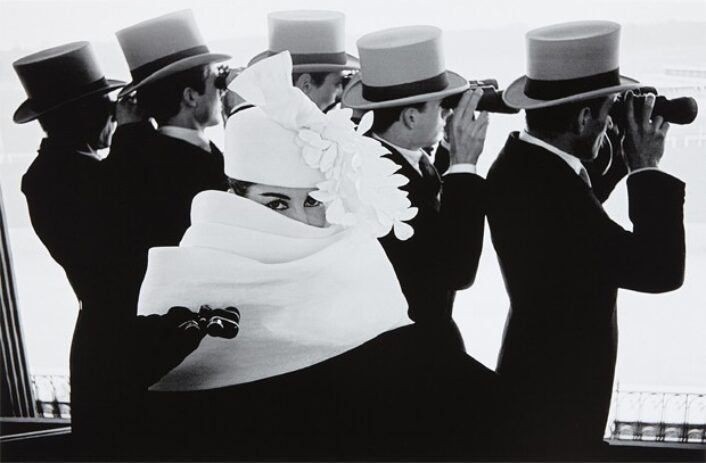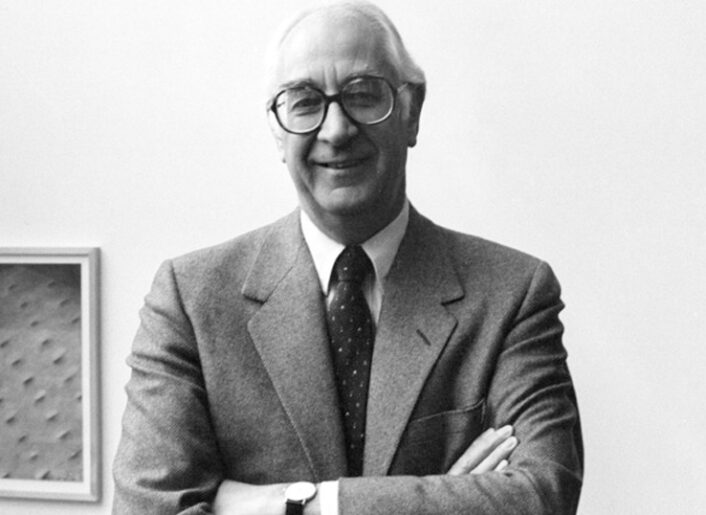Culture
A tribute to Frank Horvat

Suzanne and the late Lance at the office in front of Horvat’s “Givenchy Hat” from 1958.
Image courtesy of: Suzanne Lovell, Inc.
Recently, the world lost one of its most premier photographers. Frank Horvat, the Italian-born photographer got his hands on his first camera, a 35mm Retinamat, when he was a teenager. He decided that he would trade his stamp collection for funds to buy the camera, it turns out he made the right decision.
Horvat studied fine arts at Milan’s Brera Academy and first traveled to Paris when he was 22 years old. He worked for Magnum Photography, considered one of the most prestigious photographic agencies (the agency was formed by four photographers, among which were Robert Capa and Henri Cartier-Bresson whom Horvat met when he first visited Paris). Horvat also worked for Life and Paris Match, as well as Vogue, Harper’s Bazaar, and Elle.
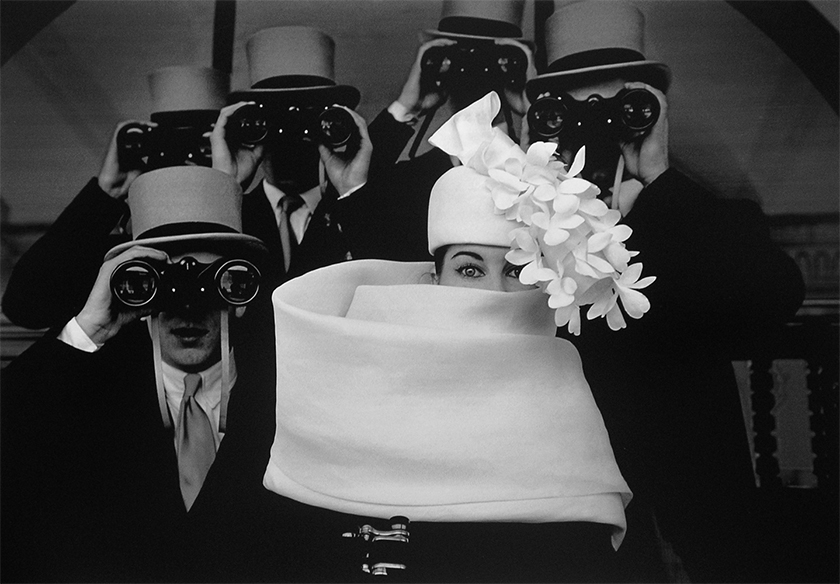
“Givenchy Hat, B” from 1958.
Image courtesy of: Holden Luntz Gallery
Horvat spent time in Asia photographing fashion and was sent around the world by the German magazine, Revue. As soon as magazines began to disappear in the 1970’s, the photographer reinvented himself and started to take on freehand projects by both photographing the subject and conducting the interviews.
One of Horvat’s first assignments was to shoot Givenchy’s first fashion show. He said (to WWD), “I started with Givenchy , so to speak.” His reportage-style fashion shoots of premier models and designers often times included lively street life.
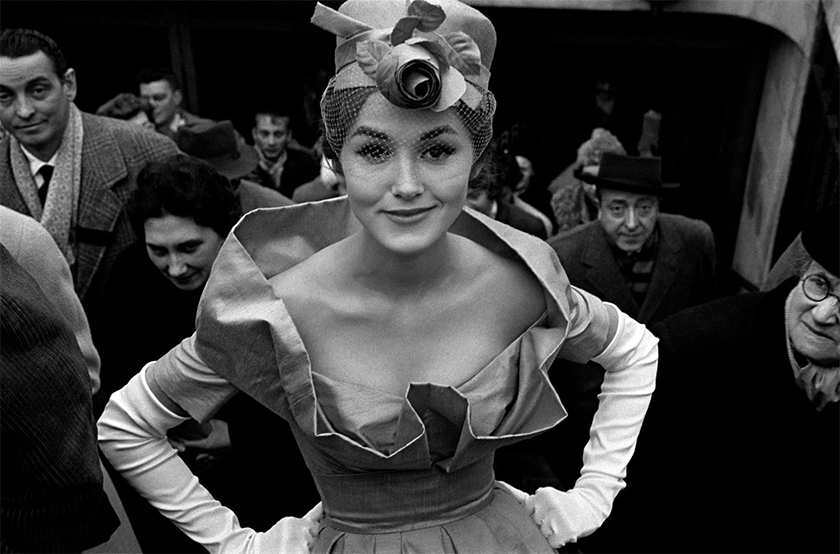
A great example of a Frank Horvat photograph.
Image courtesy of: Lens Culture
Horvat was active in photography throughout his entire life. He was unique in that he embraced the decades’ technological advances such as Photoshop. Photoshop especially helped Horvat to compensate for the loss of sight in one eye and a heart attack in his later years. The photographer invented an app called Horvatland and he curated a Facebook page on a daily basis… uploading pairs of photos for his followers to peruse at their leisure.
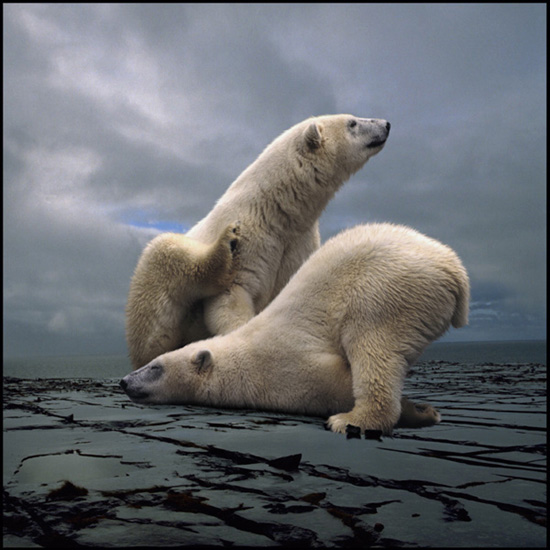
“Polar Bear”.
In this iconic photograph, Horvat edited the polar bears from a zoo and placed them into their natural habitat onto cold rock. The elements of art and principles of design emphasize the radical balance, the lines, and the color. Looking closely you can see how the polar bears really look as though they are in their natural surrounds, it appears as though this photograph was taken in the North Pole.
Image courtesy of: Angela Hunt’s Photography
In 1998, Horvat replaced all of his professional equipment with a compact camera that he carried in his pocket so that he could shoot anything at any moment. This appealed to the photographer because he realized that you never know when something of interest might come along. He said (courtesy of WWD), “The only thing that truly interests me in a photo is the miracle,” said Horvat. “That something happened at that moment that can never happen again. And I’m astonished by those miracles.”
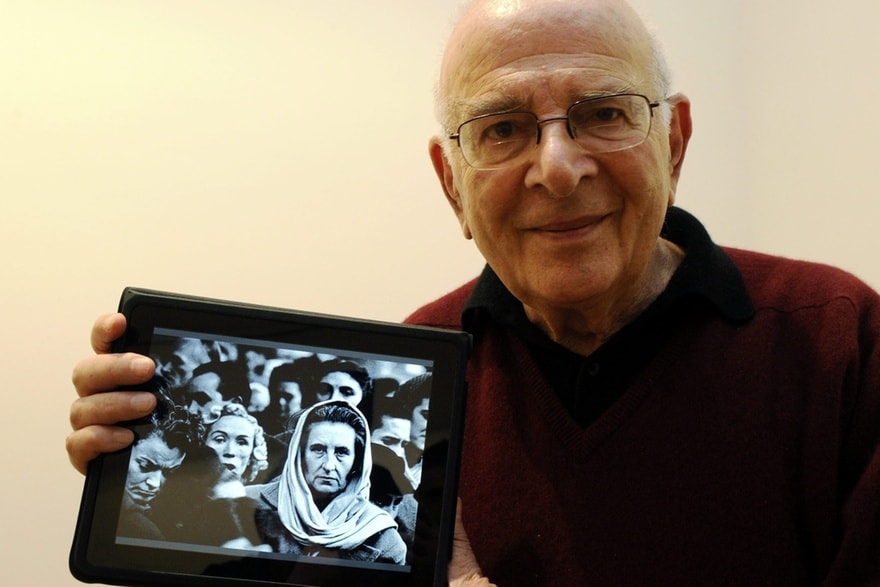
Frank Horvat holding up one of his photographs, 2011.
Image courtesy of: Swiss Info
After the 1960’s, Horvat took photographs of many different subjects. He gained international acclaim for his fashion photography because it showcased the genre with a more realistic and less formal style. He says, “I didn’t take pictures of war, misery, suffering or madness – not out of indifference to these misfortunes, but because I feel neither the moral justification nor the physical courage to face such situations as a photographer.” As for celebrities, he said, ” they are not part of my world.”
His career spanned all subjects including a beggar in 1953 India, French strippers at the Sphinx Club in 1956, and New York City subway commuters in the 1980’s. We feel so lucky that we have been able to collect some of Horvat’s photographs… they are truly unique works of art!
